-
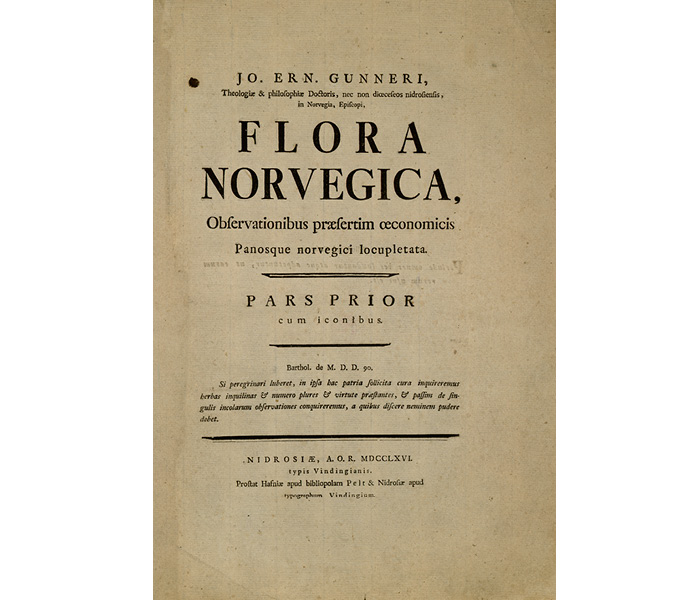
Title page of Flora Norvegica, part one, published 1766.
Jacob von der Lippe Parelius (1744-1827) signed several illustrations in Flora Norvegica, but it is uncertain whether he drew all the illustrations. A theologian, he was engaged as supervisor and illustrator for the Natural History Collections of the Royal Norwegian Society of Sciences and Letters. Parelius was Bishop Johan Ernst Gunnerus’s amanuensis.
-
Extract from the introduction of Flora Norvegica, written by bishop Gunnerus:
Translated from Latin by Egil Kraggerud (Norsk Tro og Tanke, 1999).
The study of natural history greatly helps to strengthen the proof of the existence of the deity and to shed light on God’s infinite perfection, as well as providing a genuine foundation on which all the physical sciences can derive support. It therefore also fulfils the requirements of Norwegian citizens, in both public and private respects. For this reason, it is essential for anybody – not least Christians and good citizens – to endeavour to further this extremely useful, yes divine science, as far as ever possible. [….]
In part one, I present 314 plants, reserving the remainder for the second part and, should any new plants be discovered after that, to our nidrosiensic documents (“nidrosiensic” = from Nidaros, the old name of Trondheim, editor’s note). First then, after acquiring a reasonable number of plants, will I prepare an abbreviated, systematic version of the Flora, if I live long enough. If not, any novice in botany should be able to write such a work since all the plants are presented using the descriptions and characteristic features given by Linné, frequently also those given by other botanists as well. If necessary, I identify the plants using my own definitions, distinctive features and vernacular names. Moreover, I append several illustrations, either in this Flora or in the nidrosiensic documents.
Other things which may shed light on this part of the Flora I reserve for a later occasion. I therefore ask the kind reader to be content for the moment with what I offer here. I do not doubt that he will excuse any defects that have sneaked into this work, especially if he takes into account the difficulties facing a man who is far from almost all botanists and all public libraries, and entirely on his own and only with his own effort wishes to penetrate the innermost sanctity of botanists, at the same time as his numerous official duties are ever calling him away.
As regards the second part of the Flora, its completion will largely depend upon the attitude of my dear countrymen, especially the botanists. Their attitude has so far proved exceptionally clear, ready and eager as they are to provide me with rare plants along with their botanical observations, both theoretical and practical.
It remains only to say: may the all-good, almighty God cause His own name’s immortal honour, as well as the advantage of many people, to be furthered by this work!
I wrote this at my residence at Berg, near Nidaros, on 29th March in the year 1766 after the Birth of Christ.
-
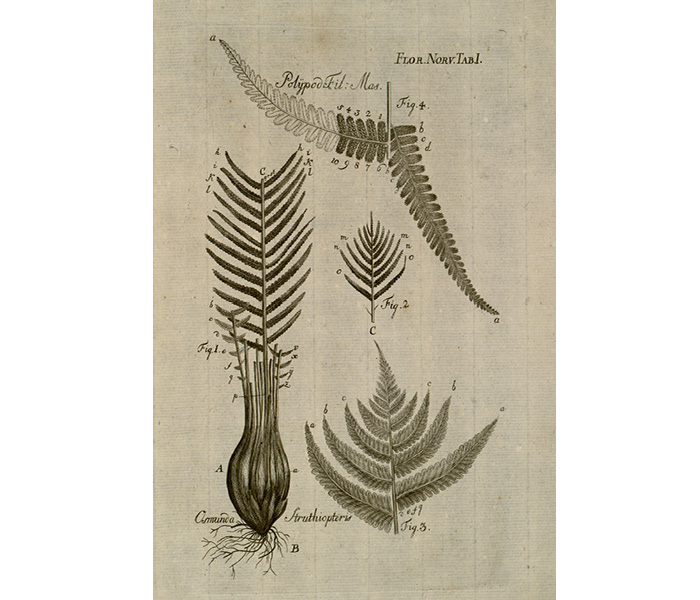
Part 1. Plate 1. Fig.1 - 3: Osmunda struthiopetris now called Matteuccia struthiopteris ostrich fern, a Woodsiaceae fern. Figure 4: Polypod.Fil.Mas. synonym Dryopteris filix-mas, Dryopteridaceae.
-
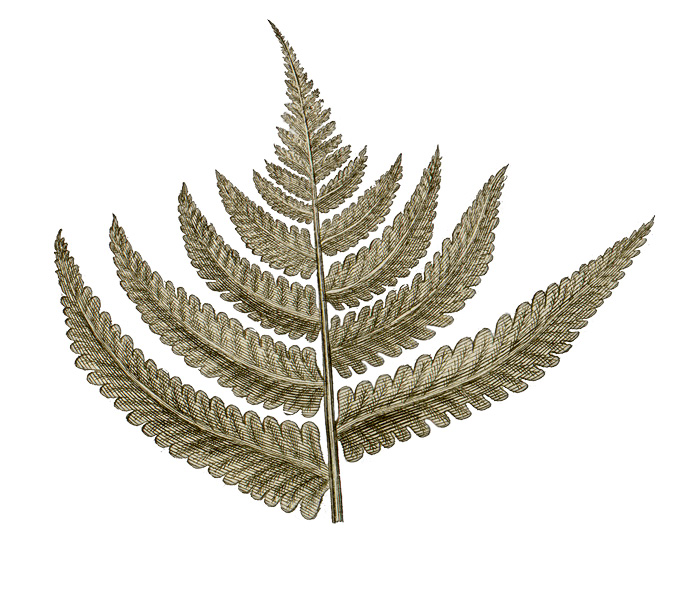
Part 1. Plate 1, Fig. 3: Detail of the ostrich fern Matteuccia struthiopteris.
-
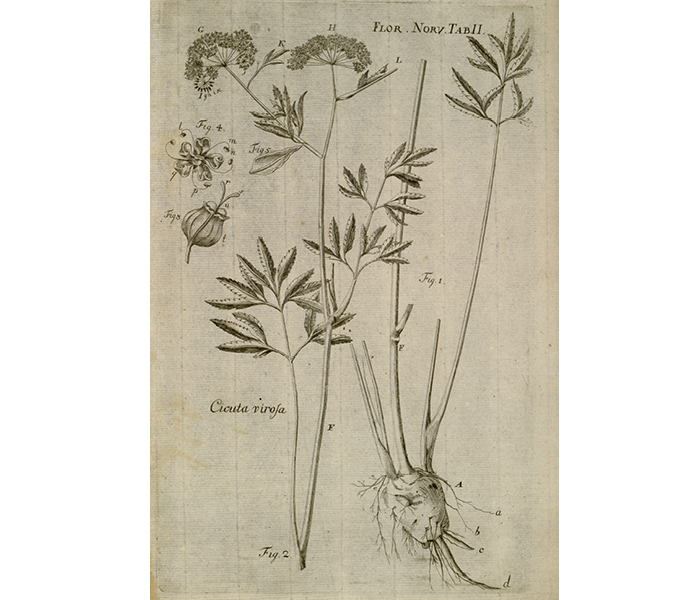
Part 1. Plate 2: Cicuta virosa, water hemlock. Apiaceae. Water hemlock is highly toxic. It contains cicutoxin, a poisonous substance that affects the central nervous system, and can cause death within 1-3 hours if ingested. Water hemlock was used in executions in ancient Greece and provides a violent and painful death of seizures.
-
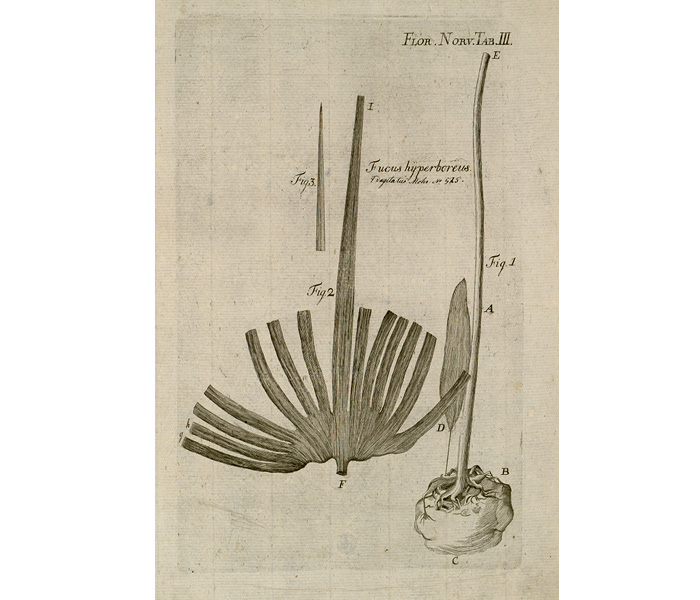
Part 1. Plate 3: Fucus hyperboreus Gunnerus, taxonomic synonym Laminaria hyperborea (Gunnerus) Foslie; a brown alga (kelp), commonly called tangle or cuvie. Foremerly used as animal feed, and the ash of kelp could be used to make glass. Iodine derived from kelp, was an important Norwegian export in the 1800s.
-
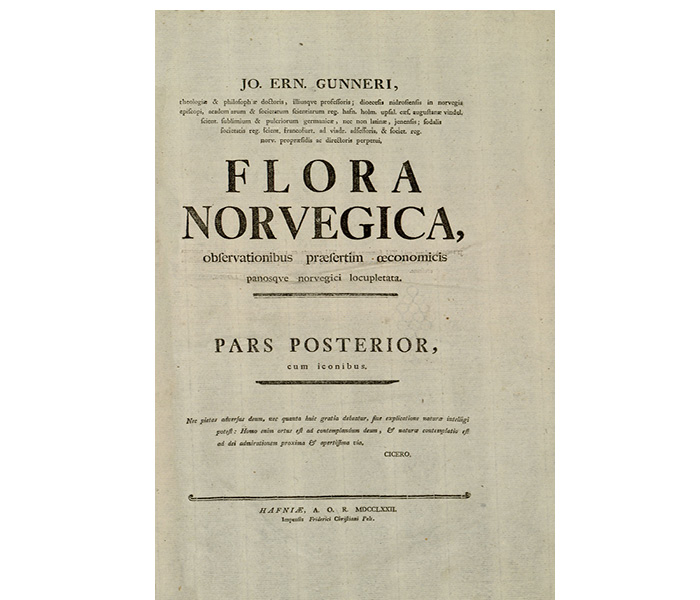
Title page of Flora Norvegica, part two, published in 1774. This second part was long overdue and, owing to technical and financial problems, it was published posthumously in 1774, edited by Gunnerus' nephew Niels Dorph. Flora Norvegica was the only Norwegian flora for almost a hundred years until M. N. Blytt published his flora in the years 1861-1876.
-
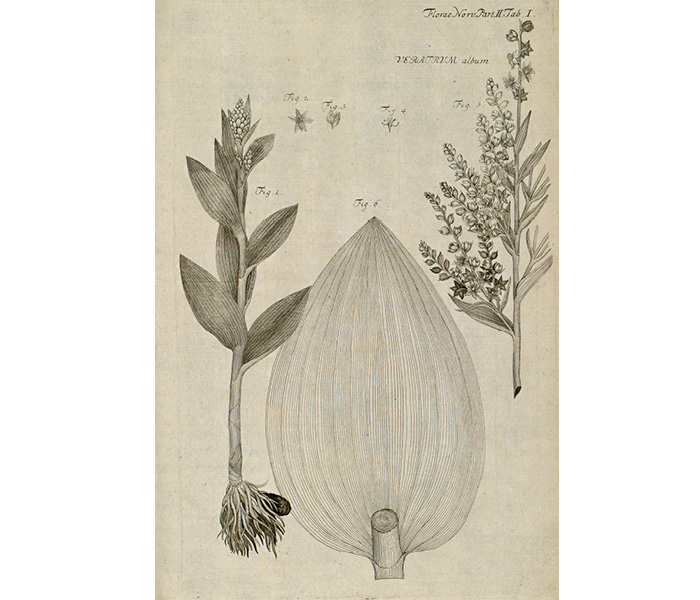
Part 2. Plate 1. Fig. 1-6: Veratrum album, white hellebore or false helleborine, Melanthiaceae. The dried and powdered rhizome evokes powerful sneezing. White hellebore is highly toxic. It contains a number of toxic alkaloids that reduce blood pressure, calm the heart and lowers heart rate and respiration. White hellebore is an ancient medicinal plant that now has scarcely any medicinal significance as there are more effective and less toxic drugs. The main Norwegian localities for the plant is in north-eastern Norway. Gunnerus mentions in Flora Norvegica that the Sami used it as "sneezing powder"; as a form of snuff, but considering the toxicity of the plant this is very risky.
-
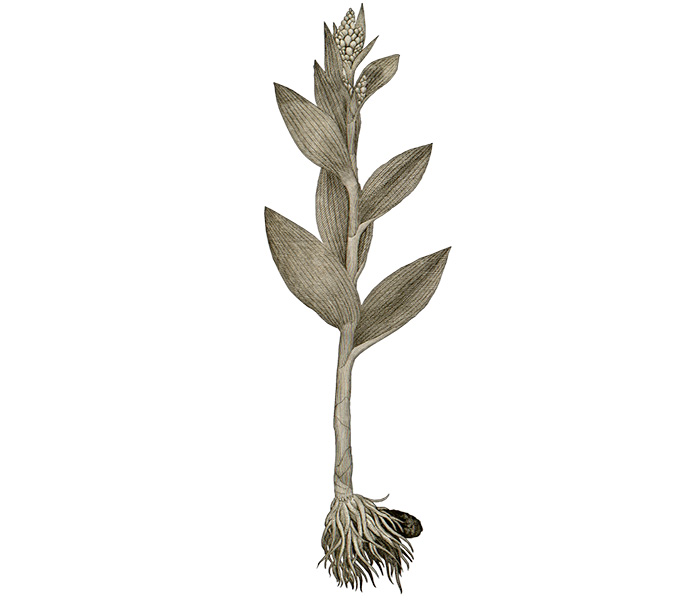
Part 2. Plate 1. Fig. 1: Veratrum album - white hellebore.
-
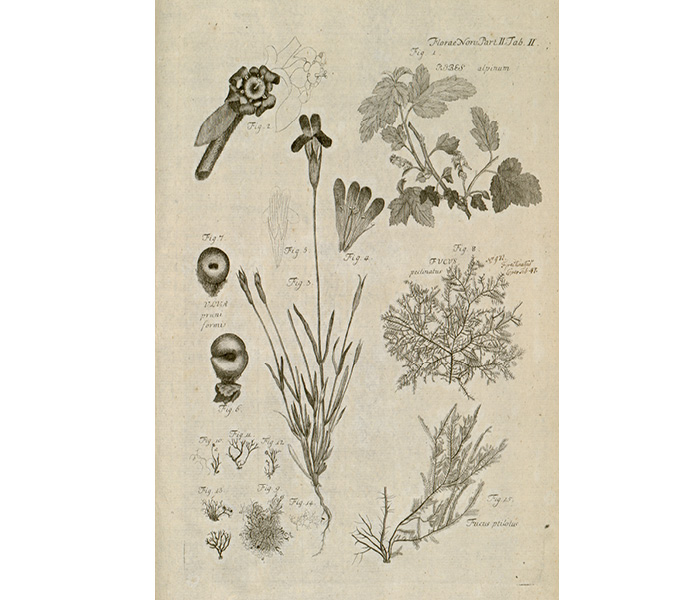
Part 2. Plate 2. Fig. 1 and 2: Ribes alpinum - alpine currant, Grossulariaceae. Alpine currant was described as a garden plant already in the 1600s and is currently a commonly used hedge plant. Fig. 3-5: Gentiana ciliate taxonomic synonym Gentianopsis detonsa, Gentianaceae. Fig. 6 and 7: Ulva pruniformis. Fig. 8: Fucus pectinatus Gunnerus, taxonomic synonym Ptilota serrata Kütsing. Fig. 9, 10, 12-14: Lichen nordmøricus. Fig. 15: Fucus ptilotus Gunnerus taxionomic synonym for Ptilota gunneri P.C.- Silva Maggs & L. M. Irvine.
-
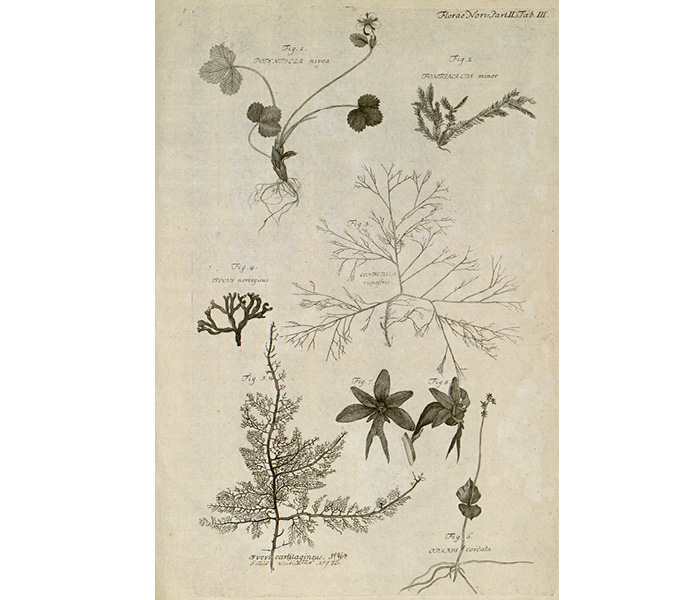
Part 2. Plate 3. Fig.1: Potentilla nivea, now cinquefoil, Rosaceae. Fig. 2: Fontinalis minor, lesser water-moss. Fig. 3: Conferva rupestris Linnaeus taxionomic synonym for the green seaweed Cladophora rupestris (Linnaeus) Kützing. Fig. 4: Fucus norvegicus Gunnerus 1772, taxonomic synonym for Chondrus crispus Stackhouse, Irish moss. Fig. 5: Fucus vindicatus cartilagineus L. taxonomic synonym for Plocamium cartilagineum. Fig. 6-9: Ophrys cordata L., lesser twayblade, taxonomic synonym for Listera cordata,Orchidaceae.
-
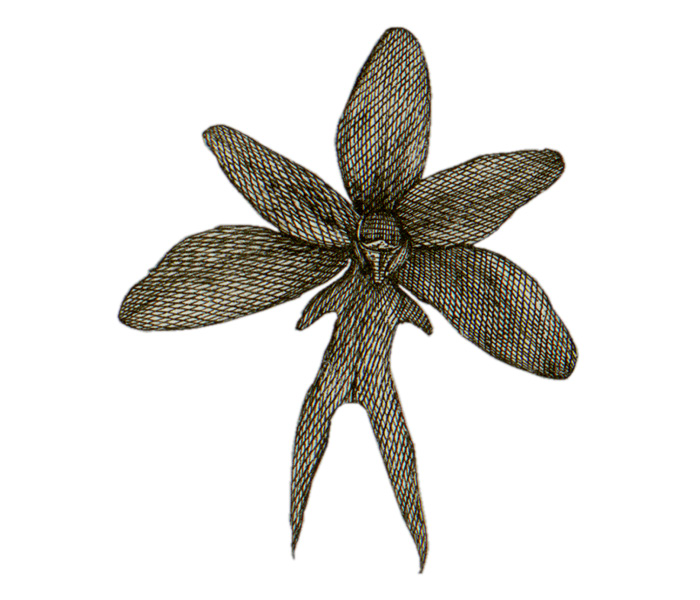
Part 2. Plate 3 Fig. 7: Detail of the flower of Ophrys cordata L., taxonomic synonym Listera cordata, lesser twayblade, Orchidaceae.
-
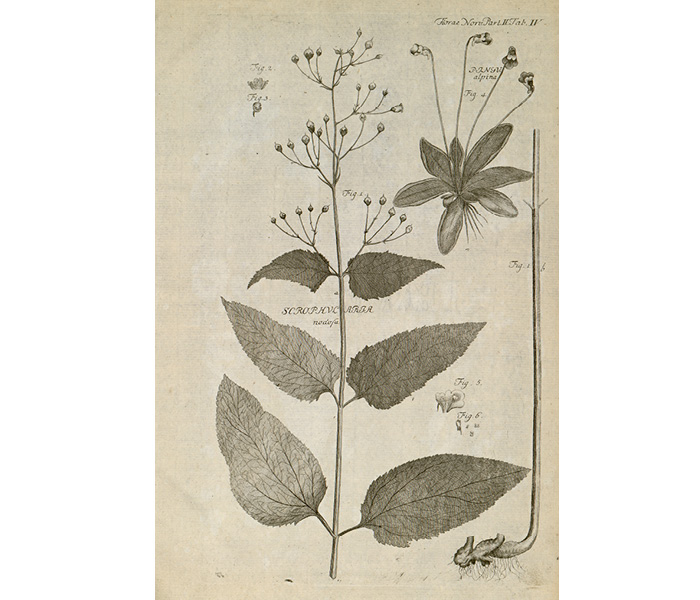
Part 2. Plate 4 Fig. 1-3: Scrophularia nodosa - common figwort, Scrophulariaceae. Common figwort was also formerly used as a medicinal plant. The scientific family name Scrophularia refers to its use as a cure for thedisease Scrofulosis tuberculosis
Fig. 4-6: Pinguicula alpina - mountain butterwort. Lentibulariaceae.
-
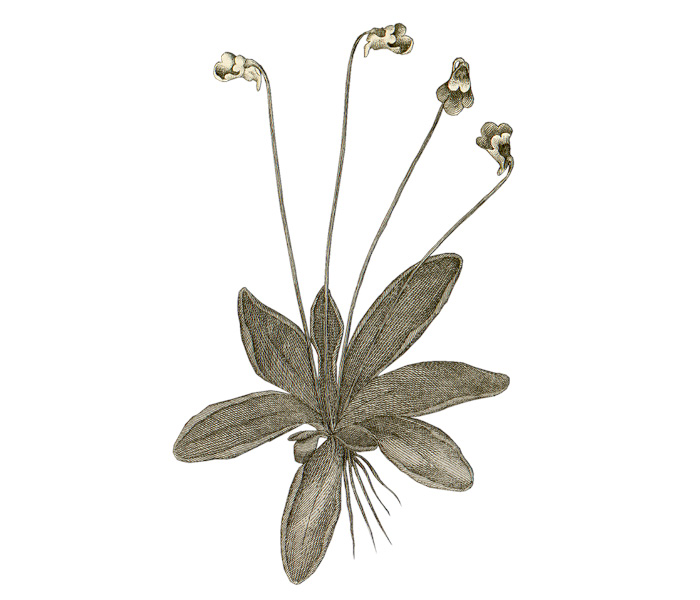
Part 2. Plate 4. Fig. 4: Pinguicula alpina - alpine butterwort. Lentibulariaceae. The family name comes from the word pinquis meaning fat and refers to the appearance of the leaves. Alpine butterwort is an insectivorous plants. It is used in herbal medicine as a remedy against coughs, whooping cough and other respiratory ailments. It has also been used to make "tettemelk" (dense milk); a means of preserving milk. [Source: Wikipedia - https://no.wikipedia.org/wiki/Tettemelk]
-
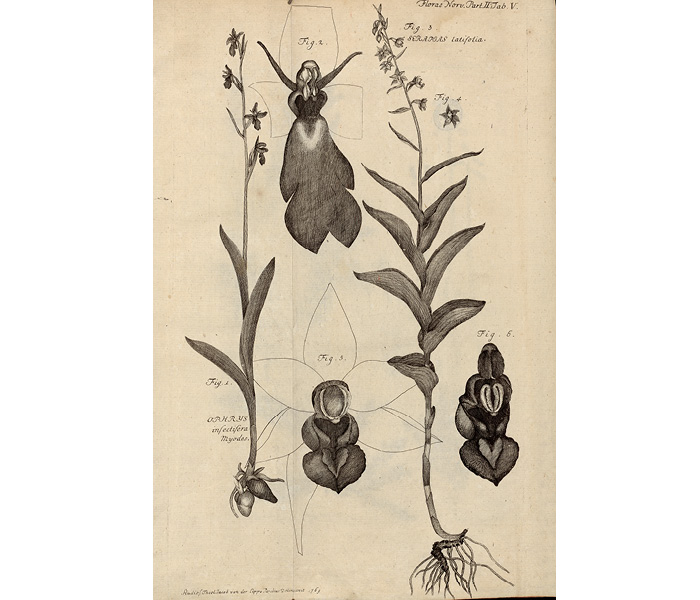
Part 2. Plate 5. Fig. 1 and 2: Ophrys insectifera (myodes) L. fly orchid, Orchidaceae. This orchid mimics the shape and smell of a female digger wasp. The male lands on the flower to copulate, and the orchid thus cheats the wasp into helping with pollination. Fig. 3-6: Serapias latifolia taxonomic synonym for Cephalanthera damasonium, white hellebore.
-
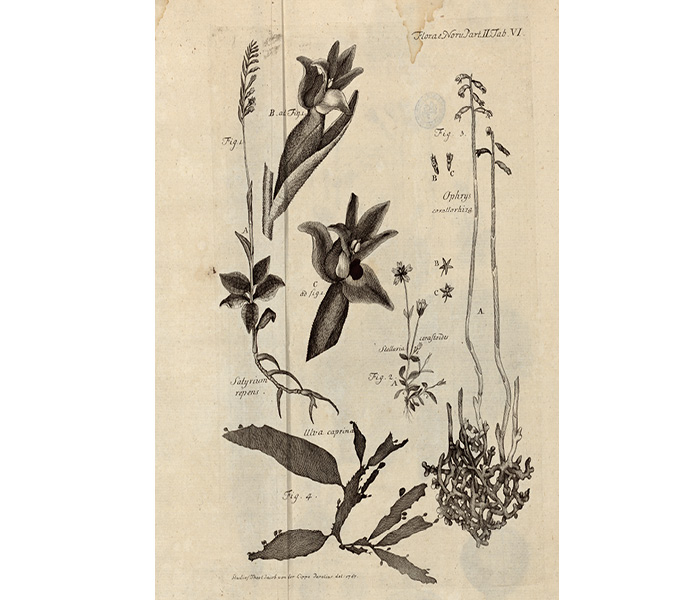
Part 2. Plate 6. Fig. 1. A - C: Satyrium repens taxonomic synonym for Goodyera repens, creeping lady's tresses, Orchidaceae. Fig. 2. A -C: Stellaria cerastoides, taxonomic synonym for Cerastium cerastoides, starwort mouse ear, Caryophyllaceae. Fig. 3. A -C: Ophrys corallorhiza taxonomic synonym for Corallorhiza trifida, early coralroot, Orchidaceae. Fig. 4: Ulva caprine Gunnerus taxonomic synonym Palmaria palmata, dulse.
-
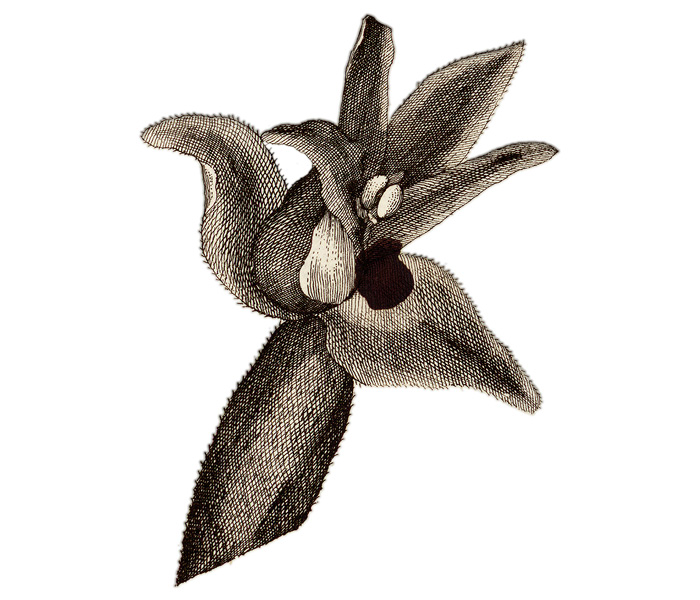
Detail: Part 2. Plate 6. Fig C: flower of Satyrium repens, taxonomic synonym of Goodyera repens, creeping lady's tresses, Orchidaceae
-
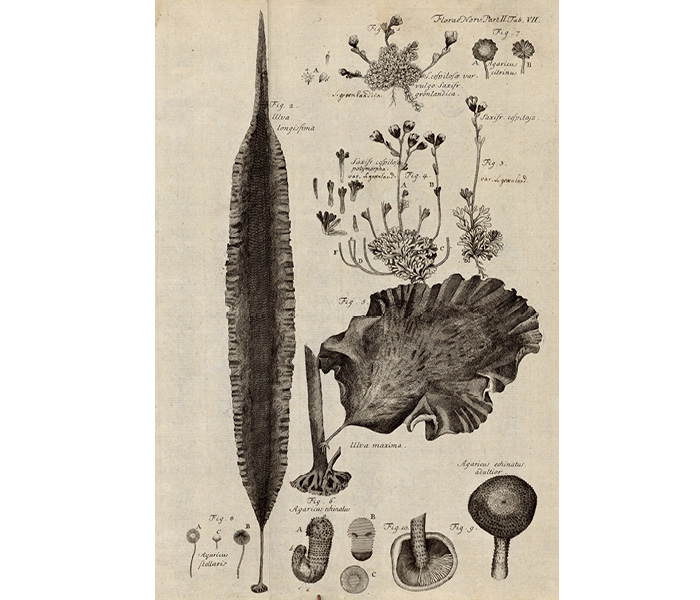
Part 2. Plate 7. Fig. 1, 3 and 4: Saxifraga cespitosae var.vulgo.saxifr.grønlandica taxonomic synonym for Saxifraga cespitosa L. Saxifragaceae, tufted saxifrage. Fig. 2: Ulva longissima Gunnerus, taxonomic synonym for Saccharina latissima, sugar kelp. Fig. 5: Ulva máxima Gunnerus 1772 taxonomic synonym for Saccharina groenlandica (Rosenvinge), sugar kelp. Fig. 6, 9 and 10: Agaricus echinatus. Fig. 7: Agaricus citrinus. Fig. 8: Agaricus stellaris.
-
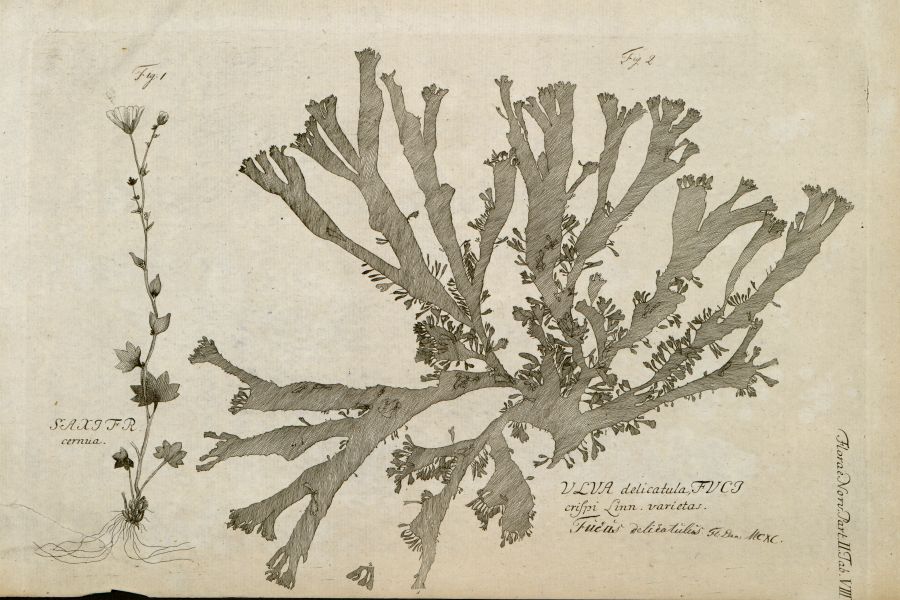
Part 2. Plate 8. Fig. 1: Saxifraga cernua, drooping saxifrage, Saxifragaceae. Fig. 2: Ulva delicatula Gunnerus 1772. This marine plant, now called Palmaria palmata, was first described by Gunnerus.
-
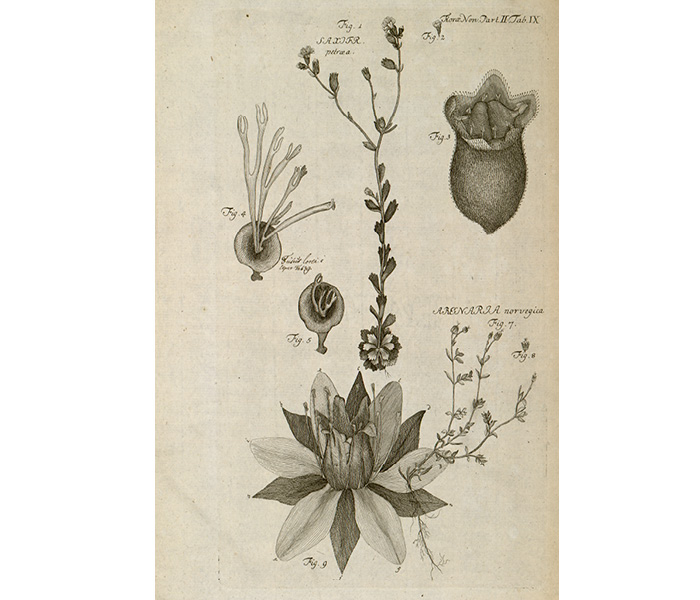
Part 2. Plate 9. Fig. 1 -3: Saxifraga petraea, possible synonym for Saxifraga adscendens, wedgeleaf saxifrage, or Saxifraga tridactylites, rue-leaved saxifrage, Saxifragaceae. Fig. 4 and 5: Fucus loreus Linnaeus, taxonomic synonym for Himanthalia elongata, thongweed. Fig.7 - 9: Arenaria norvegica Gunnerus, arctic sandwort, Caryophyllaceae.



















